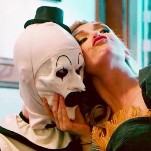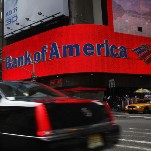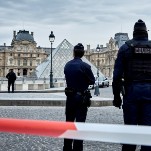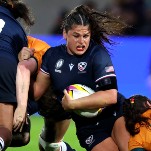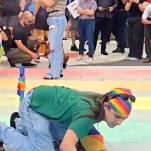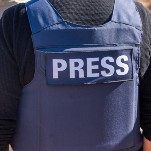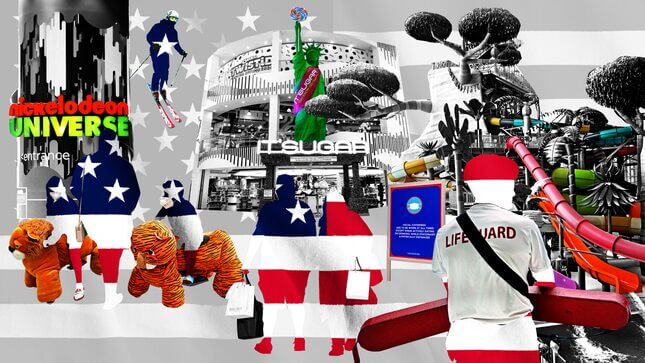
Illustration: Elena Scotti (Photos: Getty Images, AP, Shutterstock)
Deep in the bowels of the American Dream, a 1.3 million square foot mega-mall in New Jersey’s marshy, low-lying Meadowlands, I laughed out loud in what I now recognize as the first real moment of delight I’ve felt in some time. I had been at the mall for about an hour or so, strolling its enormous corridors and marveling at the delights within, when I saw a small child in a face mask zip by astride a motorized stuffed tiger. This was a Dream Rider, one of the dozens of gimmicky attractions offered at American Dream, and I knew that to fully experience the mall as its creators intended, I had to find the stable that housed these animals and ride one for myself.
About ten minutes and $10 later, I was zooming around a corridor of the American Dream, laughing so hard that I was crying, going maybe 1 MPH on a stuffed rhino selected purely because he seemed both sturdy and kind of over it. I gunned the engine towards a plaza filled with uncomfortable-looking chairs. I tested my driving skills (laughable) and my steed’s turn radius (non-existent) by executing one very slow donut in front of my accomplice, Jezebel senior editor Kelly Faircloth. Emboldened and free, I weaved in and out of the Marvel-themed photo booths plunked in the middle of the walkway and even considered rolling up to the Wetzel’s Pretzel’s, buying one, and then eating it while driving my new best friend with one hand.
But 10 minutes is a long time to spend riding around a small area of a large shopping mall, especially if you’re an adult. The novelty of riding around on a contraption meant for children—like the ones I was smoking in my loops around the area to which we were confined—was done after about three minutes or so. Five minutes, which is how much time had elapsed when I asked my accomplice to check, felt like an eternity. I no longer felt the need or desire to ride the rhinoceros. This is the American Dream in a nutshell: something you think will be fun for much longer than it actually is. Any fun one might find inside its massive walls is fleeting, replaced almost immediately by fatigue. I drove him back to his stable, dismounted, and watched as an employee in a face mask hosed him down with a spray bottle and wiped off his plastic-covered back. It was time for lunch.
Construction on the American Dream began some 15 years ago in the swamplands of East Rutherford, New Jersey, in the shadow of MetLife Stadium. At the time, it was called Xanadu: a larger-than-life fantasy that was not a “mall” but a retail and entertainment destination, somewhere between a regular shopping mall and Orlando, Florida’s multi-verse of theme parks and attractions. Its path to existence has been fraught with financial woes and beset with a classic case of failure to launch. Xanadu began its slow rise from the earth in 2005, scheduled to open to the public in 2007. Construction wasn’t smooth; financing on the project changed multiple hands and ground to a standstill by the recession in 2009. Early on, there was supposed to be an enormous Ferris wheel modeled after the Eye of London, which would gaze upon the mosquito-ridden marshes of northern New Jersey and the nearby New York City skyline. While Xanadu was under construction, its neighbor, MetLife Stadium, was racing toward the finish line, completed in time to host the Super Bowl in 2010. (There was concern that the mall would somehow distract visitors from attending events at the football stadium, but the New York Jets and Giants settled their lawsuit regarding this with the mall’s developers peacefully.)
-

-

-

-

-

-

-

-

-

-

-

-

-

-

-

-

-

-

-

-

-

-

-

-

-

-

-

-

-

-

-

-

-

-

-

-

-

-

-

-

